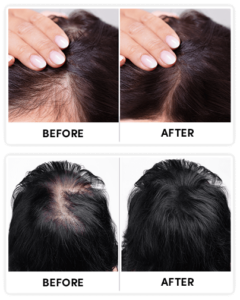How to Prepare for a Successful Hair Transplant: A Patient’s Guide

Getting to Grips with Hair Transplants
Thinking about bringing back that lush head of hair? It’s a thrilling idea, though it might feel a bit daunting at first. The key to a smooth hair restoration experience starts with understanding the ins and outs of hair transplantation. So, what’s the lowdown on hair transplants? Simply put, it’s a surgical method where hair follicles are relocated from a part of your body with plenty of hair, known as the 'donor site', to thinning or bald spots, called the 'recipient site'. While it’s mainly used to tackle male pattern baldness, it’s not just for men—women and those looking to boost facial hair can benefit too.
What's Involved in a Hair Transplant?
In a nutshell, a hair transplant involves moving healthy hair follicles from one part of your body to areas where hair is sparse or missing. It’s a minimally invasive procedure, typically done under local anesthesia. The cool thing is, once transplanted, your hair will keep on growing naturally, blending right in with your existing locks. This seamless integration is why so many people are opting for hair transplants as a long-term fix for hair loss.
Different Types of Hair Transplants
There are two main types of hair transplants: Follicular Unit Transplantation (FUT) and Follicular Unit Extraction (FUE). FUT involves taking a strip of skin with hair from the donor area and breaking it down into tiny follicular units. Meanwhile, FUE involves removing individual hair follicles directly from the scalp. Each method has its own set of pros and cons, and the best choice often depends on factors like your level of hair loss, hair type, and personal preferences.
Are You a Good Fit for a Hair Transplant?
Hair transplants aren’t a one-size-fits-all solution. Ideal candidates typically have enough healthy hair at the donor site and realistic expectations about the results. They work best for those dealing with hereditary hair loss, and good health is a must for going through surgery. Chatting with a skilled surgeon can help you figure out if a hair transplant is right for you and set you on the road to the results you’re hoping for.
Finding the Right Clinic and Surgeon
Picking the right clinic and surgeon is crucial for a successful hair rejuvenation journey. It’s not just a box to tick off; it’s a decision that can significantly impact your outcomes. Dive into research by checking out clinics with a great reputation and surgeons who have tons of experience in hair transplants. It’s not just about finding the cheapest option but ensuring you're in capable hands that focus on quality and your satisfaction.
Clinic Research: What to Look For
When scoping out hair transplant clinics, take a good look at reviews, testimonials, and before-and-after pictures of previous patients. These insights can give you a peek into the clinic’s track record and how happy past patients have been. Also, check out the clinic’s accreditation and certifications—they’re a good sign that they stick to high medical standards. If you can, try reaching out to previous patients to hear about their personal experiences.
Questions to Discuss with Your Surgeon
Your meeting with the surgeon is prime time to ask questions and clear up any uncertainties. Key questions to consider include: What’s your experience with hair transplants? Which technique do you think suits my case? How many procedures have you done? Talk over possible risks and what the recovery will be like. A top-notch surgeon will take the time to address your worries and offer detailed explanations, making sure you feel ready and informed.
Top Trichologist: Do This To Your Scalp To Regrow A Full Head Of Hair

Completely natural and dirt cheap way that makes it possible for you to finally regrow all your hair back.
Watch nowThe Importance of Certified Professionals
Choosing a board-certified surgeon is a must. This certification shows that the surgeon has gone through rigorous training and sticks to high ethical and professional standards. It adds an extra layer of trust, assuring you that your hair restoration is in skilled hands that prioritize safety and top-notch results.
Getting Physically Ready for Your Hair Transplant
Physical prep is key to ensuring your hair transplant goes off without a hitch. This involves tweaking your diet and steering clear of certain meds that might interfere with the procedure. Your surgeon will give you specific guidelines based on your needs, but here are some general pointers to get you started.
Diet Tips Before Surgery
Eating a balanced diet loaded with essential vitamins and minerals can aid your body’s healing process. Include protein-rich foods, along with fruits and veggies that boost your immune system. Steer clear of alcohol and caffeine in the days before your surgery, as they can affect blood circulation and up your chances of bleeding during the procedure.
Medications to Steer Clear of Before Surgery
Some medications, like blood thinners, anti-inflammatory drugs, and certain herbal supplements, should be avoided pre-surgery. These can raise the risk of bleeding and make healing tougher. Your surgeon will give you a full rundown of meds and supplements to avoid, helping you minimize risks and set the stage for a successful hair transplant.
Prepping Mentally and Emotionally
Getting your mind and emotions in check is just as vital as physical prep. Setting realistic expectations and managing any pre-surgery jitters can really affect your overall experience. Here’s how to get your mind and emotions ready for what’s ahead.
Aligning Your Expectations
Having a realistic understanding of hair transplant outcomes can help keep your expectations in check. While a hair transplant can greatly enhance hair density and appearance, remember that results can vary from person to person. Talk over your goals with your surgeon and gain a clear grasp of what’s achievable for you.
Handling Anxiety and Stress
Feeling nervous before surgery is totally normal. To keep those nerves in check, try relaxation techniques like deep breathing, meditation, or yoga. Engaging in hobbies or activities you love can also help distract your mind and ease stress. Remember, your surgical team is there for you, so don’t hesitate to reach out with any worries or questions leading up to the procedure.
Why The Ancient Samurai Warriors Never Lost Their Hair…

guaranteed to work for any men or women out there...
Watch nowPre-Operation Tips for a Smooth Hair Transplant
Sticking to pre-operation instructions is key to making sure everything goes smoothly on the big day. These steps are designed to prep your body and mind, laying the groundwork for a successful procedure.
Day-Before Surgery Tips
The day before your surgery, focus on relaxing and making sure you’re physically ready. Avoid alcohol and caffeine, as they can mess with blood flow and anesthesia. Get a good night’s sleep to help your body recover better after surgery.
Morning-of Surgery Instructions
On surgery day, shower and wash your hair thoroughly, skipping any styling products. Wear comfy, loose-fitting clothes, ideally with a button or zip front to avoid pulling clothes over your head post-surgery. Follow any specific eating and drinking instructions your surgeon gives you before the procedure.
What to Expect on Transplant Day
Knowing what to expect on the day of your transplant can help ease any nerves and make for a smoother ride. From arrival to the actual procedure, here’s what’s in store.
Checking In and Pre-Op Procedures
When you arrive at the clinic, you’ll check in and be welcomed by the surgical team. They’ll go over the procedure details, answer any last-minute questions, and make sure you’re comfy. You’ll also get local anesthesia to numb the area, making the procedure virtually pain-free.
Getting the Lowdown on the Transplant Process
The transplant process involves carefully taking hair follicles from the donor area and implanting them into the recipient site. Depending on how much hair you’re transplanting, the procedure can take a few hours. During this time, you can relax, listen to music, or even catch a movie. The surgical team will keep you in the loop throughout, ensuring a positive experience.
Post-Transplant Care and Recovery
Taking care of yourself after the transplant is crucial for a smooth recovery and top-notch results. By following your surgeon’s advice and looking after the transplanted area, you can promote healing and minimize any potential hiccups.
Watch Your Hair Come Back FASTER Than You EVER Dreamed Possible

WITHOUT Expensive Medications, Lasers, or Painful Surgeries!
Try this at homeRight After the Procedure Care Tips
Right after the procedure, you’ll get detailed instructions on how to look after your scalp. This includes gentle cleaning, steering clear of direct sunlight, and avoiding strenuous activities. You might notice some swelling and discomfort, but these usually fade within a few days.
Dealing with Side Effects and Discomfort
Common side effects include mild swelling, redness, and a bit of scabbing in the transplanted area. Over-the-counter pain meds and cold compresses can help ease discomfort. If you notice anything unusual or have concerns, reach out to your surgeon for advice and support.
When Can You Get Back to Your Routine?
While recovery times differ, most folks can get back to normal activities within a week. But it’s wise to skip strenuous exercise and heavy lifting for at least two weeks post-surgery. Stick to your surgeon’s recommendations to ensure a smooth recovery and protect those precious new hair follicles during this critical time.
Long-Term Care and Maintenance
To get the best results from your hair transplant, ongoing care and maintenance are key. By keeping up with follow-up appointments and adopting healthy hair care habits, you can support the longevity of your results.
The Importance of Follow-Ups
Regular follow-up appointments with your surgeon are vital for tracking your progress and addressing any concerns. These visits let your surgeon check on the healing process, monitor hair growth, and tweak your care plan if needed. Keeping in touch with your surgical team ensures you stay on track to achieving the results you’re aiming for.
Hair Care Advice for Best Results
Post-transplant, switch to a gentle hair care routine to foster healthy growth. Use mild shampoos and steer clear of harsh chemicals or too much styling. Protect your scalp from the sun by wearing hats or using sunscreen when you’re outdoors. By taking these steps, you can enhance the longevity and look of your new hair, ensuring you enjoy all the benefits of your hair transplant.






